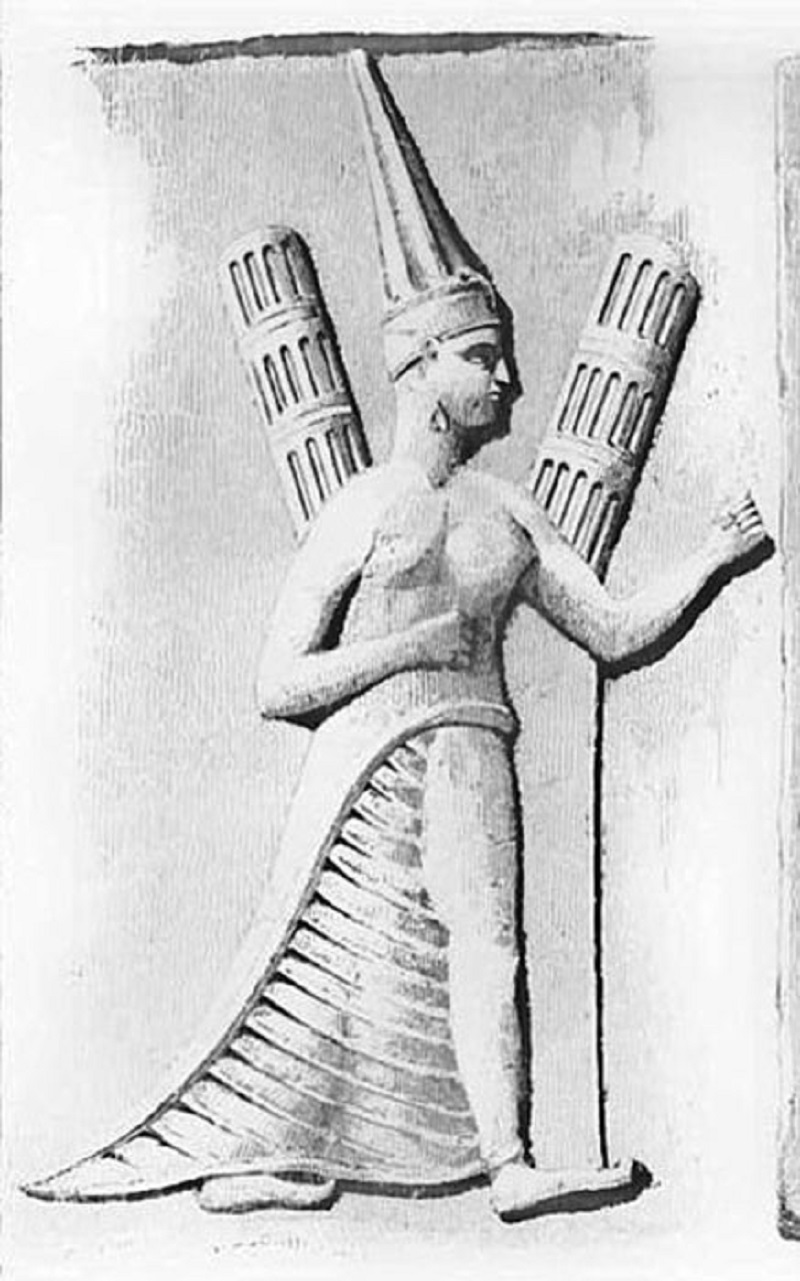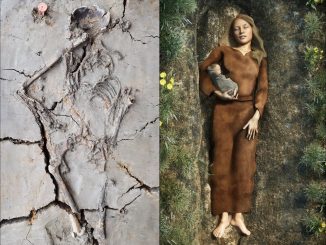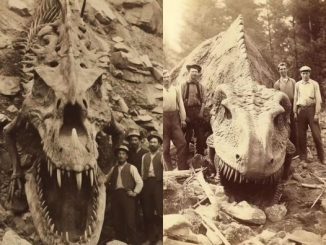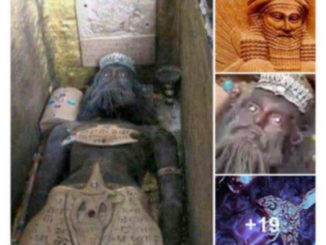While plowing his fields, a farmer in Türkiye’s central Çorum province came across something very unusual. The plow of the farmer from the village of Çitli in Mecitözü district hit a bracelet that looked very beautiful, ancient and precious. Realizing it might have historical value, he brought it to the Çorum Museum. Experts at the museum discovered that it was a rare Hittite bracelet from the late Bronze Age in Anatolian Türkiye, Daily Sabah reported.
Resul Ibiş, an archaeologist at the museum, told Ihlas News Agency (IHA), according to Daily Sabah: “After initial assessments, we realized that this work is unprecedented and we never seen anything like this before”.
The museum cleaned and restored a rare Hittite bracelet that was deformed and missing some parts when it was brought to them. After dating the Hittite bracelet to the 13th century BC, the end of the Bronze Age, the bracelet was recorded in the museum’s inventory and added to the collection of museum.
Resul Ibiş also told IHA that very little Hittite jewelry has survived and that this extremely rare find will help shed light on jewelry styles in the Hittite civilization, which reached its peak in the mid-14th century B.C. origin, covering an area including most of Anatolia as well as parts of the northern Levant and Upper Mesopotamia.
Made of bronze, nickel, silver and gold, this stunning 3,300-year-old artifact is decorated with Hittite symbols. The electro-alloy interior is covered with a thin etched gold plate. According to Arkeonews, the gold plate has an image of the Hurrian goddess Shaushka and her servants Ninatta and Kulitta.
Šauška, the main Hurrian goddess of love and war, was also revered by the Hittites and for this reason she is depicted on a recently discovered rare Late Bronze Age Hittite bracelet. (Charles Texier / Public Domain)
Why is the Hurrian Goddess present on the Hittite Armband of the Farmer
The Hurrians were an influential part of the Hittite empire. They were a distinct Near Eastern people who spoke the Hurrian language. By the beginning of the Iron Age, they had fully integrated into the larger Hittite community. The Hurrian religion had a strong influence on Hittite beliefs, as evidenced by a rare Hittite farmer’s bracelet depicting the Hurrian goddess of love and war.
Šauška is the most important Hurrian goddess and is associated with love and war. She is identified as the Hurrian equivalent of the Mesopotamian goddess Ishtar. Šauška is also the goddess of spells and is invoked to heal people and restore their health. Although often worshiped in a feminine form and called by feminine titles such as “allai”, which is Hurrian meaning lady, there are also references to male avatars. Ninatta and Kulitta are two goddesses who serve Šauška and are also depicted on the farmer’s rare Hittite bracelet.
The Lion’s Gate, southwest of the UNESCO site Hattusa, is now a huge open-air archaeological park and one of Turkey’s most important tourist attractions. (Bernard Gagnon / CC BY-SA 3.0 )
The Hittites and Hattusa, “Memory of the World”
The Hittites were an ancient Anatolian people who established an empire at Hattusa in north-central Anatolia around 1600 BC. It reached its peak in the mid-14th century BC. The Hittite civilization played an important role in the development of urban life in the late Bronze Age. Credited with creating the first iron weapons and armor, the Hittites survived the transition from the Bronze Age to the Iron Age.
Today, Hattusa, the first national excavation site in Türkiye, is one of the country’s most visited tourist destinations. With its well-preserved ancient buildings and archaeological sites, it was added to the UNESCO World Heritage list in 1986. It serves as an open-air museum enclosed by a long wall The 6 km (4 mi) site features grand gates, 71-meter (78 yard) long underground passages, the Hittite palace at Büyükkale, 31 excavated temples and ancient grain silos.
With thousands of cuneiform tablets excavated at Hattusa, it has also been recognized by UNESCO as “Memory of the World” since 2001. In fact, the first series of excavations at Hattusa, were carried out. From 1906 to 1912, 10,000 cuneiform tablets were unearthed. cuneiform tablet. Research by archaeologist and linguist Bedřich Hrozný proved that Hittite or Nesite was an Indo-European language.
The cleaned and restored bracelet is currently on display at the Çorum Museum. The ancient site of Hattusa has provided a rich source of income for archaeologists. The astonishingly well-preserved architectural wonders and vast archive of cuneiform tablets have led to a number of groundbreaking discoveries, including the systematic identification of the Hittite language. Indo-European. However, very little jewelry has been found belonging to the Hittite civilization. The recent discovery of the bracelet with its rich carvings will help fill in the gaps in the historical record.




